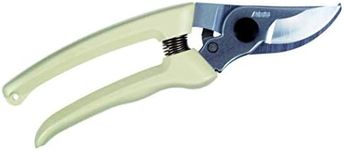We Use CookiesWe use cookies to enhance the security, performance,
functionality and for analytical and promotional activities. By continuing to browse this site you
are agreeing to our privacy policy
Best Pruning Shears
From leading brands and best sellers available on the web.#2

Felco
10%OFF
FELCO Pruning Shears (F 14) - High Performance Swiss Made One-Hand Garden Pruner with Steel Blade,Red, Silver
View Product
#3
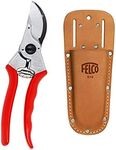
FELCO
Felco 2 Bypass Pruner and Leather Holster (Bundle, 2 Items)
View Product
#4
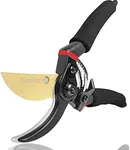
gonicc
23%OFF
gonicc 8" Professional Premium Titanium Bypass Pruning Shears (GPPS-1003), Hand Pruners, Garden Clippers.
View Product
#5
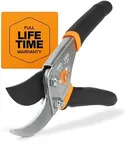
Fiskars
7%OFF
Fiskars 9109 Traditional Bypass Pruner
View Product
#6
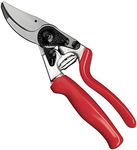
Felco
Felco F-12 Classic Pruner for Smaller Hands
View Product
#7

Okatsune
Okatsune Hand Pruner Short (Bypass Pruners) (7in)
View Product
#8

Okatsune
10%OFF
Okatsune 103 Bypass Pruners General Purpose Medium
View Product
#9
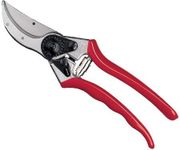
Felco
Pruner #2 Original Felco Pruner #2 Original Felco
View Product
#10

Pygar Inc
Pygar Inc Felco F-5 Classic Manual Pruning Shears
View Product
Buying Guide for the Best Pruning Shears
Choosing the right pruning shears can make gardening tasks much easier and more enjoyable. The right pair will help you make clean cuts, reduce hand fatigue, and last for many seasons. When shopping for pruning shears, it's important to consider how you'll use them, the types of plants you'll be trimming, and your own hand size and strength. Understanding the key features will help you find a pair that fits your needs and makes your gardening more efficient.Blade TypePruning shears come with different blade types, mainly bypass and anvil. Bypass blades work like scissors, with two curved blades passing by each other to make a clean cut, which is ideal for live, green stems. Anvil blades have one straight blade that closes onto a flat edge, which is better for cutting dry or dead wood. If you mostly trim live plants, bypass shears are usually best, while anvil shears are better for tougher, dead branches.
Blade MaterialThe material of the blades affects how sharp they stay and how easy they are to maintain. Stainless steel blades resist rust and are easy to clean, making them good for damp conditions, but they may need sharpening more often. High-carbon steel blades stay sharper longer and are stronger, but they can rust if not cared for. If you want low maintenance, stainless steel is a good choice, but for heavy use and sharper cuts, high-carbon steel may be better.
Cutting CapacityCutting capacity refers to the maximum thickness of branch the shears can cut. This is usually measured in millimeters or inches. Smaller shears may cut up to 1/2 inch, while larger ones can handle thicker branches. If you mostly trim small flowers or thin stems, a smaller cutting capacity is fine. For shrubs or thicker branches, look for shears with a higher cutting capacity.
Handle Design and ComfortThe design and comfort of the handles are important for reducing hand fatigue, especially if you have a lot of pruning to do. Some shears have ergonomic handles, cushioned grips, or rotating handles to make them easier to use. If you have smaller hands or less hand strength, look for shears with smaller, ergonomic handles. For larger hands or heavy use, padded or rotating handles can make a big difference.
Locking MechanismA locking mechanism keeps the blades closed when not in use, which is important for safety and storage. Some locks are easier to use than others, and some can be operated with one hand. If you want quick and safe storage, look for a reliable and easy-to-use locking mechanism. If you have limited hand strength, test the lock to make sure you can operate it comfortably.
Spring MechanismMost pruning shears have a spring between the handles that helps them open after each cut. The type and quality of the spring can affect how easy the shears are to use. Coil springs are common and easy to replace, while wire springs can sometimes pop out. If you want smooth, easy operation, look for a sturdy, well-attached spring. If you plan to use the shears a lot, make sure the spring is durable and easy to replace if needed.



